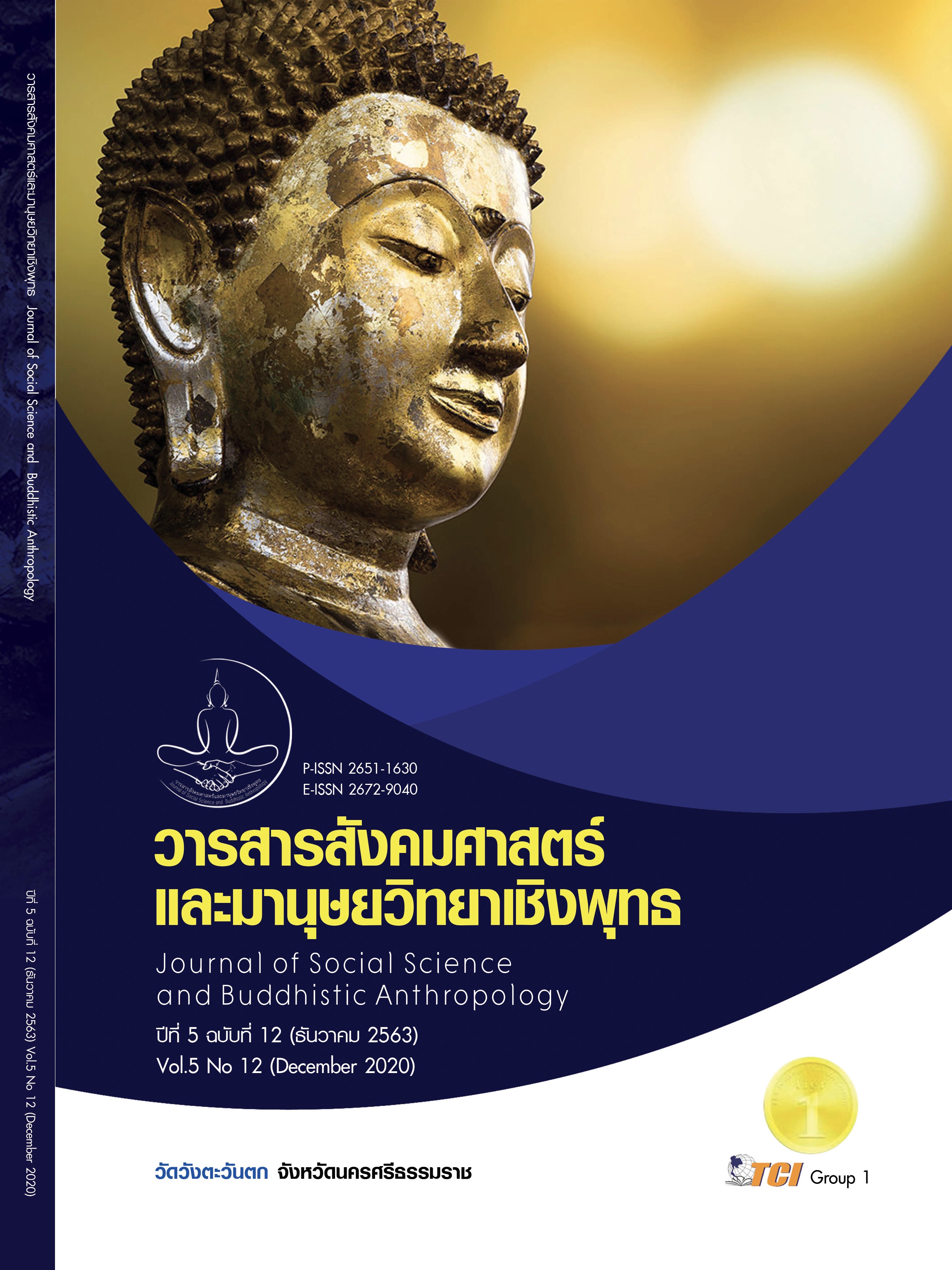THE EFFECT OF LEARNING MODEL FOR HAPPINESS OF LEARNING BY C2G TECHNIQUE ON COGNITIVE DOMAIN BASED ON THE CONCEPT OF BENJAMIN S. BLOOM IN ANATOMY AND PHYSIOLOGY SUBJECT
Keywords:
Learning Model For Happiness of Learning By C2G Technique, Cognitive Domain Based on The Concept of Benjamin S. Bloom, Happiness in Learning, Anatomy and Physiology SubjectAbstract
The Objectives of this research article were to 1) Present the learning model for happiness of learning by C2G technique 2) to study the effectiveness of learning model for happiness of learning by C2G technique approach on development of cognitive domain based on the concept of Benjamin S. Bloom and happiness in learning . The sample was composed of 31 first-year students in health science major, Suan Sunandha Rajabhat University. Data were collected using happiness for learning assessment, before and after the intervention, using a set of tests on cognitive domain based on the concept of Benjamin S. Bloom. Descriptive statistics were used to describe data and analytical statistics in regard to Paired Sample T - Test. The research results showed that the structure of learning model for happiness of learning, using C2G technique based on the integration between cooperative learning, game based learning, and graphic organizer, has 3 steps: group creation, activity and self assessment. The effect of using this learning model led to students’ happiness in their studies regarding their interest in learning, satisfaction from learning, and self-esteem. After the intervention there was a significantly higher mean score of cognitive domain based on the concept of Benjamin S. Bloom, when compared to that of pre -experiments (p .05). This finding showed that learning model for happiness of learning by C2G technique can be used in the development of other subjects, which would help increase learners’ happier in their studies and promote learning behavior in Bloom’s cognitive domain
References
กมล โพธิเย็น. (2559). การจัดการเรียนรู้เพื่อนำความสุขสู่ผู้เรียน. วารสารศึกษาศาสตร์ มหาวิทยาลัยศิลปากร, 13(2),121-131.
ทิศนา แขมมณี. (2553). ศาสตร์การสอน องค์ความรู้เพื่อการจัดกระบวนการเรียนรู้ที่มีประสิทธิภาพ. กรุงเทพมหานคร: สำนักพิมพ์จุฬาลงกรณ์มหาวิทยาลัย.
ธนพล บรรดาศักดิ์ และคณะ. (2560). ความสุขในการเรียนรู้ของนักศึกษาพยาบาล. วารสารสันติศึกษา. มจร ปริทรรศน์, 5(1), 357-368.
บังอร ฉางทรัพย์. (2552). การเปรียบเทียบผลสัมฤทธิ์ทางการเรียนวิชากายวิภาคศาสตร์ของนักศึกษาชั้นปีที่ 2 ที่เรียนโดยวิธีการสอนแบบปกติและวิธีการสอนแบบประยุกต์ใช้รูปแบบการวิจัยเชิงปฏิบัติการร่วมกับวิธีแผนที่ความคิด. วารสารวารสารมหาวิทยาลัยหัวเฉียวเฉลิมพระเกียรติวิชาการ, 12(24), 13-32.
ปัทมา ทองสม. (2553). การพัฒนาดัชนีชี้วัดความสุขในการเรียนของนักศึกษาหลักสูตรพยาบาลศาสตรบัณฑิตสังกัดกระทรวงสาธารณสุข. ใน วิทยานิพนธ์ครุศาสตรดุษฎีบัณฑิต สาขาวิชาอุดมศึกษา. จุฬาลงกรณ์มหาวิทยาลัย.
พรพรรณ ศรีโสภา. (2558). การเรียนรู้อย่างมีความสุขและปัจจัยที่เกี่ยวข้องของนิสิตพยาบาล. วารสารการพยาบาลจิตเวชและสุขภาพจิต, 27(2), 16-29.
วัฒนา สุนทรชัย. (2552). วัดความพึงพอใจอย่างไรจึงจะตอบ สกอ. ได้. กรุงเทพมหานคร: สำนักประกันคุณภาพการศึกษา มหาวิทยาลัยกรุงเทพ.
สํานักมาตรฐานและคุณภาพอุดมศึกษา. (2557). คู่มือการประกันคุณภาพการศึกษาภายในระดับอุดมศึกษา ฉบับปีการศึกษา 2557. กรุงเทพมหานคร: สํานักมาตรฐานและคุณภาพอุดมศึกษา.
สุชีรา วิบูลย์สุข. (2558). ปัจจัยที่ส่งผลต่อการเรียนรู้อย่างมีความสุขของนักศึกษาแพทย์ระดับชั้นปรีคลินิก. วารสารเวชบันทึกศิริราช, 8(2), 70-76.
อรสิริ ชื่นทรวง และคณะ. (2558). รายงานการวิจัย ผลของการนำ active learning มาใช้ในการเรียนการสอน รายวิชากายวิภาคศาสตร์ของนิสิตสัตวแพทย์. ใน ภาควิชากายวิภาคศาสตร์. จุฬาลงกรณ์มหาวิทยาลัย.
Bloom, B.J. et al. (1956). Taxonomy of Educational Objectives Handbook I Cognitive Domain. New York: David McKay.
Diana J. Oakes. (2018). Using the Jigsaw Method to Teach Abdominal Anatomy. Anatomical Sciences Education, 12(3), 101-112.
Emeka Anyanwu. (2014). Anatomy Adventure: A Board Game for Enhancing Understanding of Anatomy. Anatomical Sciences Education, 7(2), 56-72.
Leyla Ayverdi and Canan Nakiboglu. (2014). Usage of Graphic Organizers in Science and Tecnology Lessons. Procedia - Social and Behavioral Sciences, 116(1), 4269-4278.
Maria Entezari and Mohammad Javdan. (2016). Active Learning and Flipped Classroom Hand in Hand Approach to Improve Students Learning in Human Anatomy and Physiology. International Journal of Higher Education, 5(4), 222-231.
Polit, D.F. & Beck, C.T. (2018). Nursing research: Generating and assign evidence for nursing practice. Philadelphia: Lippincott.
Robert V. Hill & Zeinab Nassrallah. (2018). A Game-Based Approach to Teaching and Learning Anatomy of the Liver and Portal Venous System. mededportal the journal of teaching and learning resources, 12(1), 356-373.








